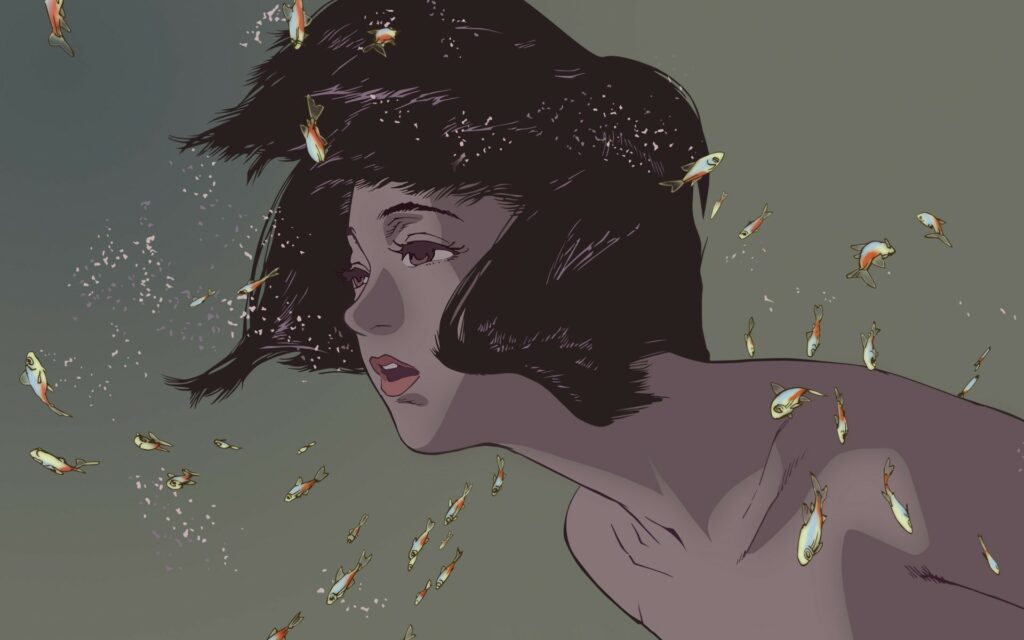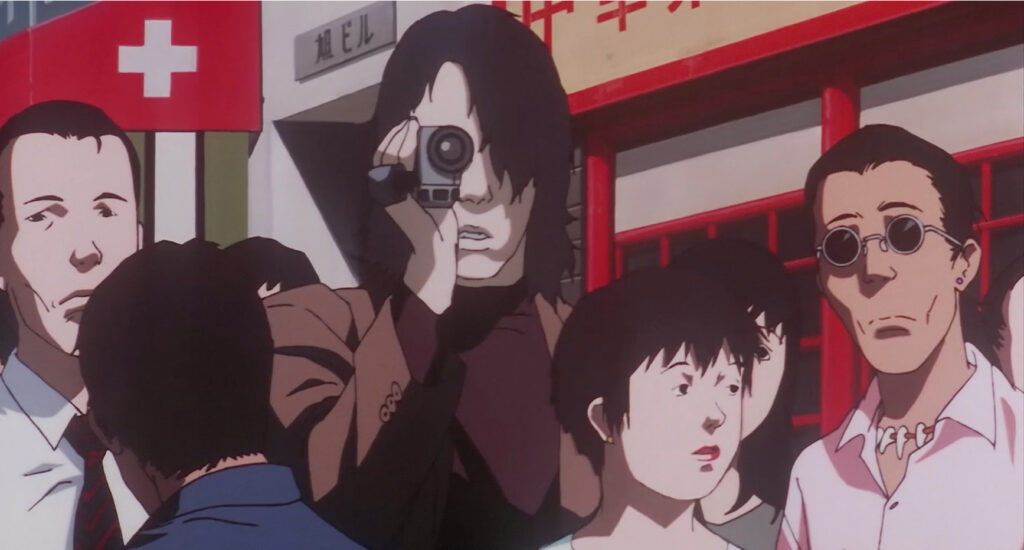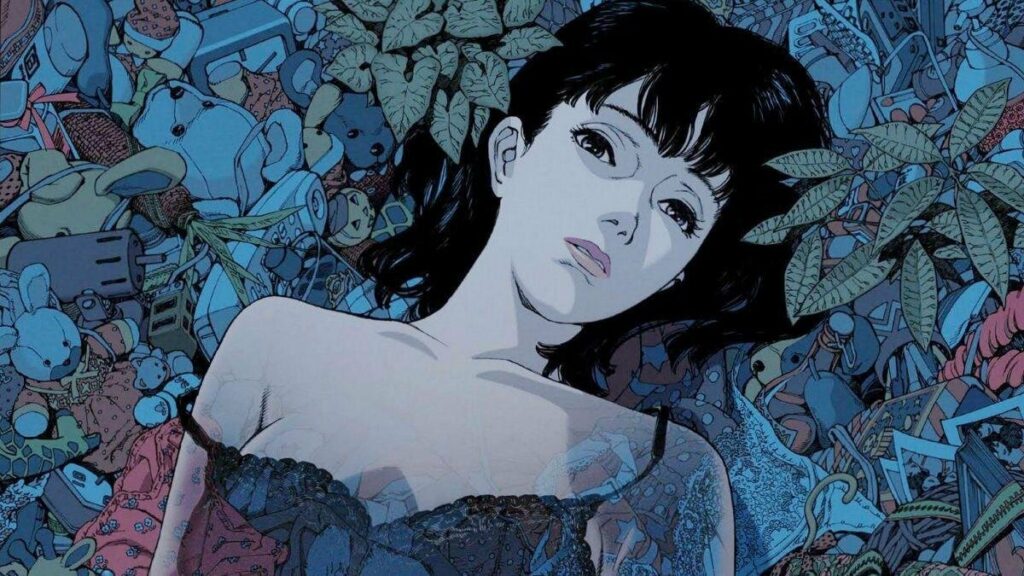If you were to look at any list of ‘Top 10 anime films of all time’, you would be hard-pressed to find one without Satoshi Kon’s directorial debut Perfect Blue. Despite being a film of the 90s, the film has aged so well that to watch Perfect Blue in 2022 is an almost eerie experience. Its comments on celebrity culture, the expectation of fans, and the way women are treated in show business are ever more relevant to today’s society than when it was first released. With the popularity of social media and the breaking down of boundaries between celebrities and fans, publically and privately, Satoshi Kon’s frightening depiction of stalkers, obsession and abuse isn’t a far cry from today’s reality.
In recent years, the term ‘parasocial interaction’ has cropped up frequently in internet articles and general online discourse to describe the psychological relationship between audience members and celebrities. The access granted by social media platforms has taken society into a new era of celebrity culture, in which the distance between star and fan can seem non-existent.

The often candid approach that celebrities take to sharing their personal lives and even interacting with their hardcore fans has merged their once firmly separate public and private personas. Though for the most part, this interaction feels like a positive experience for fans, it can lead to a false belief that they know the celebrity. This unreciprocated relationship, though mostly harmless, can sometimes lead fans to believe they are entitled to access their idol, or that they have some form of ownership of them. Therein lies the foundation of Perfect Blue.
This toxic side effect of celebrity culture is explored to a frightening extreme in Perfect Blue. Protagonist Mima is a pop idol turned actress, navigating a career in showbiz as a young woman; Me-Mania is her super fan turned psychotic stalker. We first meet Me-Mania as a security guard at Mima’s girl group concert. He watches Mima dancing, crouched down with his hand under his line of vision. The shot morphs to his point of view, where Mima is dancing in his palm. This powerful imagery demonstrates his regard of Mima as a doll – something he can own and that dances just for him. This expectation on the part of the fan, and the false belief that he shares a relationship with her is what drives the sinister thrill of the plot.

A major theme of Perfect Blue, and a recurring theme in the work of Satoshi Kon, is identity – more specifically, the duality of identity. Mima’s life is split into two: the public and the private, the pop idol and the ‘real’ Mima. Kon examines how the public and private merge in the eyes of fans, creating the illusion that they know their idols’ ‘true’ selves. This idea is further explored in a sequence where Mima’s performance with her girl group is intercut with scenes of her going about her mundane, ordinary life. It cuts from the fast-paced, colourful dancing and singing on stage to her slowly browsing the shelves in the supermarket, picking up fish food and her favourite brand of milk. There is a sharp contrast between the blasting pop music and high-energy performance with the monotony of shopping, the sound of the speakers and the wheels of the trolley.
Kon effectively demonstrates how celebrity culture creates an image of perfection in performance and never shows the humdrum life of the star behind the scenes. This idea has aged exceptionally well for a modern audience, in a society that has become increasingly invested and obsessed with celebrities’ private selves. Furthermore, Perfect Blue accidentally becomes a film of the #MeToo movement – 20 years prior – in its portrayal of the degradation and exploitation Mima is forced to endure for the sake of ‘advancing her career’. As an actress, Mima is pressured to act in a gratuitous rape scene and pose in naked photo shoots – much to the disappointment of fans that are still attached to her innocent pop-star image.
This is an all too familiar tale of female Disney stars being feeling pressured to shed their childlike image. They are too often trapped between fans who infantilise them and will take any attempt by the star to ‘grow up’ as a sign of corruption and over-sexualisation, and critics that refuse to see them as ‘serious’ artists because of their Disney roots. It is the Catch-22 of being a woman growing up in the public eye, and Satoshi Kon captures this in the most twisted and frightening way in Perfect Blue, exposing how little control young women have over their own lives.

Mima is exhausted by her pop idol role and even tells of how “the pop idol image was suffocating me”. This line acts to foreshadow her downfall: Kon turns the Mima’s duality of identity into a literal villain. Her pop idol persona comes to life as a separate, murderous, ghostly entity. Before long, the different versions of Mima flow into one another, until neither the audience nor our protagonist are sure which one is ‘real’. This blurring of boundaries explores the psychotic extreme of Mima’s loss of identity and purpose, as she deals with the pressure of being a celebrity and having to answer to fan expectations.
Additionally, Kon’s exploration of the private vs public image has resonance with not only the modern-day celebrity culture, but with any social media user. The pressure to curate a perfected image of oneself online has grown more oppressive as social media continues to weave itself into the fabric of modern society. Mima’s intense anxiety about the image she is projecting to the public is no longer the exclusive concern of the rich and famous, but of the everyday social media user.
Satoshi Kon could not have predicted the prevalence of social media and the role it would come to play in our modern, celebrity-obsessed culture, and he sadly passed away before he was able to see his astute observations come to fruition. Nevertheless, Perfect Blue is a thrilling exploration of the expectation of the female celebrity, and has only grown to become more frightening for a society with our level of preoccupation with social media, celebrity, and image.
Perfect Blue screened as part of the BFI’s Anime Season, which ran from March 28th until May 31st.
